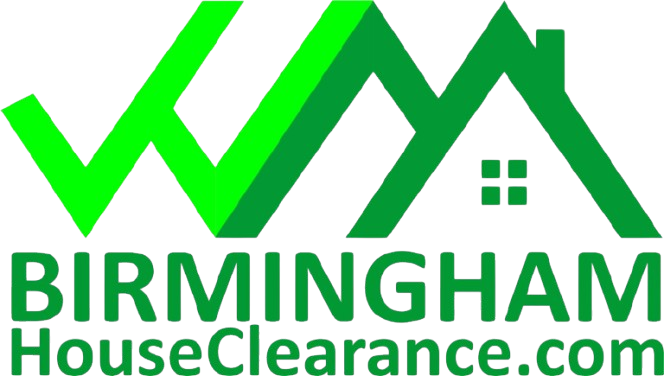Understanding the Basics of Home Clearance
What Is Home Clearance?

Cost of Clearing a Large UK Home: Home clearance is a critical process that involves the removal of unwanted items from a property. It becomes particularly necessary when a homeowner is moving, downsizing, or managing an estate after the death of a loved one. This process not only clears out clutter but also prepares a home for sale or rental, enhancing its appeal to potential buyers or tenants.
The significance of home clearance extends beyond mere aesthetics; it is often a logistical necessity. For instance, when moving to a new location, one must assess which belongings are worth taking. Homes filled with years of accumulated possessions can become overwhelming during such transitions. Professional clearance services are often sought for their expertise in efficiently managing this task, ensuring that properties are cleared promptly while adhering to environmental regulations regarding waste disposal.
Types of Items Typically Cleared
The types of items typically cleared from homes range widely, including but not limited to furniture, appliances, electronics, and personal belongings. Each of these categories presents its own challenges regarding disposal, which can significantly influence the overall cost of the clearance.
When dealing with furniture, for example, large pieces can incur additional costs due to their size and the difficulty in removing them from a property. Appliances, especially those that require electrical or plumbing disconnections, may also add to the complexity and cost of the clearance. Additionally, electronics often necessitate special handling due to environmental regulations surrounding their disposal. Personal belongings, particularly when clearing out inherited estates, can complicate matters emotionally, often requiring sensitivity and discretion.
Factors Influencing Clearance Costs
Several factors play a pivotal role in determining the cost of clearing a large UK home. The size of the property is the most obvious influence; larger homes typically house more items, thus escalating the clearance needs. The volume of items to be cleared is another critical aspect that professionals take into consideration.
Accessibility to the property can significantly impact costs. Properties situated in urban areas with limited access may require special equipment or an additional workforce, thereby increasing expenses. Additionally, the method of disposal selected—whether through recycling, donation, or landfill—can vary in cost. Eco-friendly disposal options, while often the best choice from an ethical standpoint, may incur higher fees. Understanding these factors can help homeowners better prepare for the financial implications of the clearance process.
Benefits of Professional Home Clearance Services

Engaging professional home clearance services offers numerous benefits that can ease the burden of clearing a home. One of the primary advantages is the efficiency and safety with which items are removed. Professionals are trained to handle heavy objects, minimising the risk of injury or property damage.
Moreover, these services ensure compliance with local disposal regulations, which can be intricate and vary by region. This not only protects homeowners from potential fines but also promotes responsible waste management. Hiring professionals can significantly reduce stress during what may already be a challenging time, such as moving or dealing with a deceased estate. Their expertise can streamline the process, allowing homeowners to focus on other important aspects of their transition.
Expert Insights on the Cost of Clearing a Large UK Home
How Do Professionals Assess Clearance Costs?
Professionals employ a comprehensive approach when assessing costs for home clearance. They typically consider the volume of items to be cleared, the accessibility of the property, and the methods of disposal required. After conducting a site visit, they can provide a more accurate estimate based on the observed factors.
Key factors professionals consider in their assessment include:
- Volume of items to be cleared
- Accessibility of the property
- Types of items and their disposal needs
- Labour required for heavy or difficult items
- Transportation costs to disposal sites
- Timeframes for completion
- Compliance with local regulations
This detailed evaluation ensures that homeowners receive a fair and transparent quote, reflecting the unique circumstances of their property.
What Are the Best Practices for Cost-Effective Clearance?

To undertake a cost-effective clearance, thorough planning and sorting of items is essential. By categorising belongings into groups for sale, donation, or waste, homeowners can streamline the process and potentially reduce overall expenses. Engaging reputable clearance services that offer transparent pricing structures is also crucial in managing costs effectively.
Effective strategies to minimise expenses during the clearance process include:
- Begin with a comprehensive inventory of items
- Consider DIY options for smaller clearances
- Schedule clearances during off-peak times
- Negotiate quotes with multiple service providers
- Understand disposal fees in advance
- Look for local charities that may collect items for free
- Utilise online marketplaces for selling valuables
Implementing these best practices can lead to significant savings, ensuring a smoother and more economical clearance experience.
Case Studies of Successful Clearance Projects
Examining real-world examples of home clearance can provide invaluable insights into the process and its costs. For instance, consider a scenario in London where a family needed to clear a three-bedroom house filled with decades of belongings. After a comprehensive assessment, a professional service was engaged. The total cost was approximately £1,200, which included removal, disposal, and recycling services.
In another case, a couple downsizing in the countryside faced a different challenge. Their four-bedroom home contained a mix of furniture, garden equipment, and personal items. They opted for a combination of DIY sorting and professional assistance, ultimately spending around £800. This highlighted the importance of assessing personal capabilities in conjunction with professional services.
These case studies illustrate the range of potential costs associated with home clearance and underscore the significance of tailored solutions to meet individual needs.
What Are the Average Costs of Clearing a Large UK Home?
Cost Breakdown by Room
When clearing a large UK home, it’s important to understand that costs can vary significantly by room. Generally, kitchens and garages tend to be the most expensive areas to clear due to the presence of heavy appliances and tools, while bedrooms and living rooms may incur lower costs.
A detailed breakdown of average costs per room is as follows:
- Kitchens: £300 – £600
- Garages: £250 – £500
- Living Rooms: £200 – £400
- Bedrooms: £150 – £300
- Bathrooms: £100 – £200
- Dining Rooms: £150 – £350
- Attics/Basements: £200 – £600
These figures can fluctuate based on factors such as the presence of bulky items or local disposal fees. Understanding these averages supports effective budgeting during the clearance process.
Additional Fees to Consider
In addition to base costs, homeowners should be prepared for various additional fees that can accrue during the clearance process. Disposal fees can vary widely based on the type of waste and local regulations, while transportation costs may increase if long distances must be travelled to disposal sites.
Key additional fees to anticipate include:
- Disposal fees for recyclable versus non-recyclable items
- Transportation charges, especially for heavy loads
- Labour fees for an extra workforce are needed
- Special handling charges for hazardous materials
- Site inspection fees, if required by local regulations
- Potential storage costs for items awaiting sale or donation
Awareness of these potential fees enables homeowners to budget more effectively and avoid unexpected costs during the clearance process.
How Do Costs Vary Across Different Regions?
Costs associated with clearing a large UK home can vary significantly between regions due to differences in service availability and local disposal fees. Urban areas such as London may experience higher costs due to increased demand for clearance services and higher disposal fees at local facilities. In contrast, rural areas might offer more competitive rates, although service availability could be limited.
Regional differences can impact the overall cost of clearing a large UK home as follows:
- Higher operational costs in urban areas
- Diverse disposal fees based on local council regulations
- Availability of local charities for donations
- Accessibility issues in rural locations require extra transport
- Potential for reduced competition affecting pricing
- Regional variations in labour costs
Understanding these regional nuances can help homeowners make informed decisions and secure the best possible rates for their clearance needs.
Impact of Property Size and Layout on Costs
The size and layout of a property can have a profound impact on the costs associated with clearance. Larger homes typically house more items, which can increase both the time and effort required for clearance. Furthermore, homes with complex layouts—such as multiple levels or awkward access points—can drive costs higher due to the additional labour and equipment needed.
In terms of expense, the following factors are influenced by property size and layout:
- Increased time needed for larger homes
- Higher labour costs for difficult access areas
- Potential for more items requiring specialised disposal
- Transportation complexities for larger volumes
- Utilisation of additional equipment for heavy items
- Efficiency loss due to complex layouts
Being aware of how size and layout affect clearance costs can help homeowners plan and budget more effectively.
Tips for Reducing Clearance Costs
Reducing the costs associated with clearing a large UK home can be achieved through strategic planning and execution. One effective method is to sort items before engaging a clearance service, thereby eliminating unnecessary costs for items that can be sold or donated. Moreover, selecting the optimal timing for clearance can result in lower rates.
Effective strategies to minimise costs include:
- Sort and categorise items into keep, sell, and dispose of
- Organise the clearance during off-peak seasons
- Consider conducting small clearances yourself
- Engage services that offer inclusive pricing structures
- Leverage local community groups for item donations
- Compare multiple quotes before making a decision
Implementing these tips can create a more manageable and economical clearance experience, allowing homeowners to navigate the process with confidence.
Trusted Strategies for Cost of Clearing a Large UK Home
Planning and Sorting Techniques
Effective planning and sorting techniques are vital for a successful home clearance. The initial step involves categorising items into groups—those to be sold, donated, or disposed of. This streamlined approach not only makes the process more organised but can also significantly reduce clearance costs.
Actionable steps for efficient planning and sorting include:
- Create a detailed inventory of all items
- Assign categories: keep, sell, donate, or dispose
- Schedule specific times for sorting to maintain momentum
- Involve family or friends for additional support
- Research local charities for donation options
- Utilise online platforms to sell items
By systematically categorising belongings, homeowners can expedite the clearance process and ensure they make informed decisions about each item’s fate.
Choosing the Right Clearance Service
Selecting the right clearance service is crucial to achieving value for money and ensuring a smooth process. It is essential to compare quotes from multiple providers, assess their reputations, and understand the scope of services offered.
When choosing a clearance service in the UK, consider the following:
- Look for reviews and recommendations from previous clients
- Request detailed quotes that outline services and costs
- Inquire about their experience with similar clearances
- Confirm compliance with local waste disposal regulations
- Assess their insurance and liability coverage
- Evaluate their customer service and communication
Taking the time to research and compare services can lead to better outcomes, both financially and logistically.
DIY vs. Professional Clearance
Deciding between a DIY approach and hiring professional clearance services depends on several factors, including the scope of the clearance and its complexity. DIY options can save money but often require a significant time investment and physical effort. Conversely, professional services can expedite the process, especially in larger homes or those with difficult access points.
To decide between DIY and professional clearance, consider the following:
- The volume and weight of items to be cleared
- Physical ability and time available for the clearance
- The complexity of disposal regulations in your area
- Emotional considerations, particularly for inherited items
- Cost of hiring professionals versus potential DIY expenses
- Time constraints related to your timelines for moving or selling
Ultimately, weighing these factors will help homeowners make the best decision for their individual circumstances.
Maximising Value from Saleable Items
Identifying and selling valuable items can significantly offset the costs associated with home clearance. Homeowners should take the time to assess their belongings and determine which items hold the most resale value. This not only helps reduce clearance expenses but can also provide additional funds for the moving process.
To achieve the best possible returns, consider the following tips:
- Research the market value for items through online platforms
- Utilise auction sites such as eBay or local selling groups
- Take quality photographs and write detailed descriptions
- Host a garage sale to sell multiple items at once
- Explore consignment shops for high-value items
- Network with local antique dealers for specialised items
By focusing on maximising value from saleable items, homeowners can turn a potentially costly clearance into a financially beneficial venture.
Managing Waste and Recycling Responsibly
Managing waste and recycling responsibly during a home clearance can significantly reduce environmental impact and disposal costs. Homeowners should familiarise themselves with local waste management regulations and recycling options available in their area. This not only promotes sustainability but may also lead to cost savings.
Guidance on handling different types of waste includes:
- Separate recyclable materials from general waste
- Identify local recycling centres for various materials
- Utilise skip hire for large volumes of non-recyclable waste
- Consider composting organic waste where applicable
- Research local charities that accept donations of usable items
- Stay informed about changing recycling regulations in the UK
Implementing responsible waste management practices not only aligns with environmental stewardship but can also save money in disposal fees.
How Can You Reduce the Cost of Clearing a Large UK Home?
Selling or Donating Items
Selling or donating usable items is one of the most effective ways to offset the costs associated with home clearance. By finding new homes for items that are no longer needed, homeowners can reduce the volume of waste needing removal and potentially earn money in the process.
Popular platforms for selling or donating items in the UK include:
- eBay
- Facebook Marketplace
- Gumtree
- Local charity shops
- Freecycle
- Depop for clothing and accessories
- Craigslist for larger items
Utilising these platforms can not only alleviate clearance costs but also provide a sense of satisfaction from giving items a second life.
Timing and Scheduling
Timing and scheduling are crucial components that can significantly impact the overall cost of home clearance. Booking clearance services during off-peak times can sometimes lead to reduced rates, as service providers may offer discounts to fill their calendars.
The best times to schedule a home clearance to minimise costs include:
- Weekdays, particularly during the morning
- Outside of peak moving seasons, such as summer
- During public holidays, when demand may be lower
- Early in the month, when families are less likely to be moving
- Last-minute bookings if providers have availability
- Coordinating with community clearance events for bulk removal
By strategically planning the timing of the clearance, homeowners can take advantage of lower rates and enhance their overall savings.
Negotiating with Clearance Companies
Negotiating with clearance companies can yield better service fees and tailored solutions that meet individual needs. Understanding the scope of work and being open about budget constraints can help establish a partnership that benefits both parties.
Effective strategies for negotiating with clearance companies in the UK include:
- Clearly communicate your needs and expectations
- Request itemised quotes for transparency
- Be prepared to discuss your budget and seek compromises
- Inquire about discounts for multiple services, such as removal and cleaning
- Leverage quotes from competitors to encourage better offers
- Ask about flexible payment options or staggered payments
Skilful negotiation can lead to more favourable terms, ensuring that homeowners receive the best possible value for their clearance needs.
Legal and Environmental Considerations
Waste Disposal Regulations
Navigating waste disposal regulations is paramount in the home clearance process. The UK has stringent laws governing the disposal of various types of waste, including electronic items, hazardous materials, and general household refuse. Compliance with these regulations is crucial to avoid substantial fines and legal consequences.
Key waste disposal regulations that affect home clearance in the UK include:
- Restrictions on landfill use for certain materials
- Regulations regarding the disposal of hazardous waste
- Guidelines for electronic waste disposal (WEEE regulations)
- Local council requirements for bulky item collections
- Environmental Agency guidelines for waste carriers
- Documentation requirements for waste transfer
Understanding and adhering to these regulations can safeguard homeowners against potential fines and ensure responsible waste management practices.
Eco-Friendly Clearance Options
Opting for eco-friendly clearance methods can be more costly initially, but it offers significant long-term benefits for the environment. Homeowners should consider sustainable disposal options that align with their ethical values, as they may also help reduce future waste management expenses.
Eco-friendly options available for clearing a large UK home include:
- Utilising recycling services for recyclable materials
- Engaging companies that specialise in eco-friendly waste disposal
- Donating usable items to charities or community groups
- Composting organic waste where feasible
- Choosing local services that minimise transportation emissions
- Participating in community recycling events
Embracing eco-friendly practices not only supports environmental sustainability but can also foster a sense of community responsibility.
Licenses and Permits Required
Certain home clearances, particularly those involving hazardous materials, may require specific licenses or permits. Understanding these requirements is crucial to ensure compliance and avoid legal issues during the clearance process.
Licenses or permits that might be needed for clearing a large UK home include:
- Waste carrier license for transporting waste
- Permits for disposing of hazardous materials
- Local council permits for bulky waste collections
- Documentation for electronic waste disposal
- Environmental permits for large-scale clearances
- Possible permissions for disposal on private land
Being aware of these legal requirements empowers homeowners to navigate the clearance process confidently, ensuring compliance and peace of mind.
Impact of Environmental Legislation on Home Clearance
Recent changes in environmental legislation in the UK have increased the complexity of home clearance. Stricter regulations surrounding waste management mean that homeowners must be more diligent in their disposal methods, which impacts both the costs and processes involved in clearance.
The effects of environmental legislation on the process and costs of clearing a home include:
- Increased compliance costs for disposal services
- Greater emphasis on recycling and waste reduction practices
- Potential fines for non-compliance with disposal regulations
- Heightened scrutiny on hazardous material management
- Encouragement of sustainable practices within the clearance industry
- Innovations in waste management technologies
Staying informed about evolving regulations can help homeowners adapt their clearance strategies, ensuring both legal compliance and environmental stewardship.
Sustainable Practices in Home Clearance
Adopting sustainable practices during home clearance can significantly reduce environmental impact while promoting responsible waste management. Homeowners should focus on methods that prioritise recycling, reusing, and reducing waste wherever possible.
Some sustainable methods for disposing of household items in the UK include:
- Donating to charities and local organisations
- Utilising recycling centres for materials like glass, paper, and metals
- Participating in community swap events for household items
- Choosing biodegradable materials for packaging during moves
- Supporting businesses that prioritise eco-friendly disposal methods
- Educating oneself and others about responsible waste practices
By committing to sustainable clearance practices, homeowners can make a significant contribution to environmental conservation while also enhancing the overall quality of their home clearance experience.
FAQs
What is the average cost of clearing a large home in the UK?
The average cost of clearing a large home in the UK can range from £800 to £2,500, depending on various factors such as size, location, and the volume of items.
Can I do a home clearance myself?
Yes, a DIY home clearance is possible, especially for smaller projects. However, it requires considerable time and effort, and may not be feasible for larger homes or items that are cumbersome.
How do I find a reputable clearance service?
To find a reputable clearance service, seek recommendations, check online reviews, and request quotes from multiple providers to compare services and pricing.
Are there any legal considerations for home clearance?
Yes, homeowners must adhere to UK waste disposal regulations, including proper disposal of hazardous materials and compliance with local council guidelines.
What can I do with items I no longer need?
Items that are no longer needed can be sold online, donated to charity, or recycled. Local community groups may also accept usable items.
How can I reduce the clearance cost?
To reduce costs, sort items before clearance, compare quotes from different services, and consider scheduling during off-peak times.
What types of items are usually cleared from homes?
Common items cleared from homes include furniture, appliances, electronics, personal belongings, and garden waste.
How do regional differences affect clearance costs?
Clearance costs can vary by region due to differences in service availability, local disposal fees, and demand for clearance services.
What eco-friendly clearance options are available?
Eco-friendly clearance options include recycling, donating usable items, and choosing services that prioritise responsible waste disposal practices.
Do I need a permit for clearing certain items?
Yes, certain items, especially hazardous materials, may require specific permits for disposal. Homeowners should check local regulations to ensure compliance with the relevant laws.






